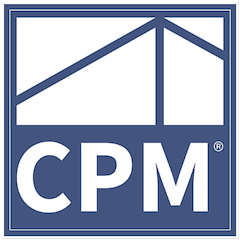Increasing Real Estate Return on Investment
Using Positive Leverage, other people's money to increase returns

How to increase return on investment in residential real estate by using debt financing.
I see many small residential real estate investors buying properties cash. To obtain the maximum possible return of a real estate investment an investor needs to review that he/she is renting the property at the maximum possible market rent, has a comprehensive maintenance program with cost reduction strategies and uses debt under a positive leverage situation.
The use of debt, such as mortgage financing, is a perfect way to maximize returns on real estate investments. The only way for this to work is in positive leverage situations.
Positive leverage is when a business or individual borrows funds and then invests the funds at an interest rate higher than the rate at which they were borrowed.
For example, if your total investment in a rental single family home is $200,000.00 and your net total income for that property a year is $10,000.00 then the yearly Return of this investment is 5%. This is the unlevered cash on cash return of the investment, also known as the Capitalization Rate ( Cap Rate).
If you are able to obtain a mortgage loan for the property with an interest rate below 5% this is call positive leverage and will increase the return on the investment but if the market interest rate is more than 5% this is negative leverage and will lower the return on the investment because the borrowed funds are costing more than what the investment is producing.
In other words the positive leverage calculation requires that you know the loan constant, which is the total annual loan payment (loan principal and interest) divided by the total loan.
The calculation is:
Loan constant = [annual loan payment] / [total loan amount]
If the loan constant is greater than the cap rate, it is positive leverage. If it is lower than the cap rate, it is negative leverage.
As an example calculation, assume a property is acquired for $200,000 and generates a net operating income (NOI) of $10,000 resulting in a 5.0% unlevered cash-on-cash return prior to using any debt. In this case, the cap rate is also 5.0% as explained above. Let’s assume we are obtaining an interest only loan.
If you as an investor are able to secure a 60% loan-to-value mortgage with an interest rate of 4.0% (interest-only), then total debt service payments would be $4,800 ($200,000 value times 60% LTV times 4.0%) and cash flow after debt service would be $5,200 ($10,000 NOI (net operating income) less $4,800 (debt service). Using debt, the investor would have contributed $80,000 of equity ($200,000 purchase price less $120,000 mortgage loan at interest only) which results in increasing the cash-on-cash return to 6.5% ($5,200 cash flow after debt service divided by $80,000 equity). This 6.5% is higher than the 5.0% cap rate and results in positive leverage.
The levered scenario obviously has a better return than the unlevered scenario. But is there a point at which using leverage is no longer a viable option? Yes — a higher interest rate can create a negative leverage situation. As an example, an interest rate of 5.2% would create an annual debt payment of ($120,000 times 5.2%) $6,240. $10,000 NOI less $6,240 debt service is $3,760. Then $3,760 divided by $80,000 is 4.70%, which is less than the 5.0% cap rate, creating negative leverage.
The use of leverage (financing) not only increases the return on the investment but also allows the investor in buying more properties because instead of putting the $200,000 as in our example above in one property, the investor can put 40% down payment which is $80,000 for a $200,000 purchase price and buy one property and be left with an extra $120,000 in hand to buy one or two more properties. This will not only dilute risk because now we have the funds invested in three properties maybe in three locations rather than all the funds in one property in one location but one of the great aspects of real estate investment is appreciation, values increase over time and are a great head against inflation and an excellent way to create wealth. For example if we use our total funds of $200,000 to buy two properties valued at $200,000 using 60% loan to value loans as in the example above, we are buying each property for $200,000 but with a down payment of $80,000 each and we still have $40,000 to buy a third property, let’s say valued at $100,000 using also financing on a 60% LTV, now we will own three properties, two valued at $200,000 and one at $100,000 so with the same $200,000 in cash, using leverage we now control $500,000 in real estate and if the appreciation rate is let’s say only 2% (usually is more than the inflation since there are many factors that influence property appreciation and not only inflation) we will be increasing our wealth by $10,000 every year since the value of all the properties ($500,000) will increase at 2%, rather than only the value of one property of $200,000 increasing at 2% which will create a wealth accumulation of only $4,000 a year instead of $10,000.
To calculate real returns of real estate investment we perform deeper analysis than the simple one here, taking into account the property appreciation over time as explained herein, then the return is composed of the yearly return after financing plus what the increase in value of the asset. This is the calculator of an Internal Rate of Return.
So in our example if we have a total return on our $200,000 investment in three properties would be the our 6.5% yearly cash on cash return plus the property appreciation ($10,000 increase in value, which is the 2% appreciation rate times the value of the three assets totaling $500,000, over our $200,000 total investment in the three assets) which is an additional 5%, so in a simple calculation we would make in one year a return of 11.5% over on our investment (6.5% plus 5%). Of course the portion of return allocated to the appreciation in value is not realized until we sell the property and we will have to take into account the selling costs and the time period from acquisition to the sale, which is what we obtain when we perform an Internal Rate of Return analysis. We will discuss Internal Rate of Return and Net Present Value and other topics of Financial Analysis in future blogs but the intent here is to illustrate how to increase returns on investment using real estate financing with positive leverage.
Gaston Reboredo CCIM CPM
Share this post













